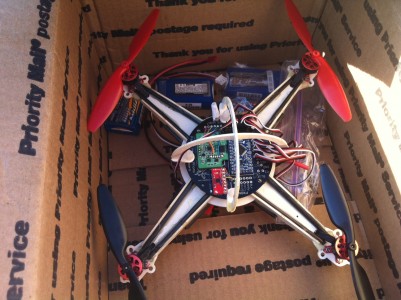Up up and away…
I apologize for not updating my blog recently, but sometimes life intervenes, and it seems like you just aren’t doing too much that would be of interest. A combination of a home burglary, increased load at work, and perhaps just a touch of malaise brought on by the political season has meant that come evening, I haven’t felt much like writing.
But I have been working on RC airplanes. I’ve been trying to record video, and some of that has been going onto my YouTube channel. In case you aren’t a subscriber over there, here’s the result of about a month’s worth of experimentation.
First of all, I must thank Mark Harrison of the Eastbay RC blog. He has been serving as a mentor to me, and has been patiently guiding me toward… well… if not competence then at least experience in RC construction and flying. His F22 inspired me to build one of my own, which he flew during this maiden voyage:
But this plane lacks dihedral and lift, so it’s a bit hard for a complete newbie like myself to fly. To get me some stick time, Mark let me fly (and crash) a series of his own planes, such as his Easy Star:
I decided that if I continued to crash his planes, it might eventually put a strain on our relationship, so I decided to construct a Nutball of my own. I recently took it out, and shot this video with my iPhone. It also shows some of Mark H.’s creations (apologies for the low audio, recording with the iPhone seems impossible for me without covering the mic input):
Here’s some nauseating video filmed looking to the rear from those early Nutball flights:
Since then, I’ve had a few more interesting Nutball flights. Last Wednesday, Mark and I met early in the morning and sent it up. I programmed my Turnigy 9X transmitter with a bit of “exponential control” to help soften the controls, and that seemed to help. I put it tup four times, and only the last one seemed fatal. I did suffer a number of hard nose-first landings, the first of which pushed the axel of the motor back against the firewall, but I simply undid/redid the set screws holding it in place, and we were ready to go again. The next two flights, I managed to get the plane flying for longer and further than I could throw it, but I noted (despite the Nutball’s rather ‘easy to fly’ reputation) that mine seemed to have a proclivity for flipping nose up onto its back. The last flight was going well, right up until the point that an unforseen mechanical failure occurred: the glue joint that held the dihedral angle on the right wing simply gave away, and the wing folded up. Net result was about a 100 foot nosedive, snapping another prop and springing my servo control arms.
Sadly, while I did have the Turnigy camera Velcroed to the wing deck, there seemed to be an electronic issue with the camera: while audio was recorded for the entire flight, when the engine first spun up for launch, the video glitched and was not recorded for these dramatic events. Rats.
I could actually repair the plane fairly simply, but I realized that my Nutball lacked a feature that most instructions inform you to do: angle the motor down by about five degrees. Mine was always parallel to the wing deck. So, rather than fix the old one, I’ll be scavenging it’s internal organs and installing them in a new and improved wing deck. To guard against the glue failure I had last time, I’ll also run a strip of tape along the glue joint to guard against vibrations which expand the joint.
Perhaps by next week, I’ll be back in the air again. Stay tuned.
Oh, one last video: Mark H. brought his tiny quadcopter out to play, which he demoed with a short flight. We put the little keychain camera aboard and recorded this flight. It was very stable and smooth in the air.

I recall burning three or four weeks of a sabbatical getting Saccade.com on the air with Wordpress. So much tweaking…